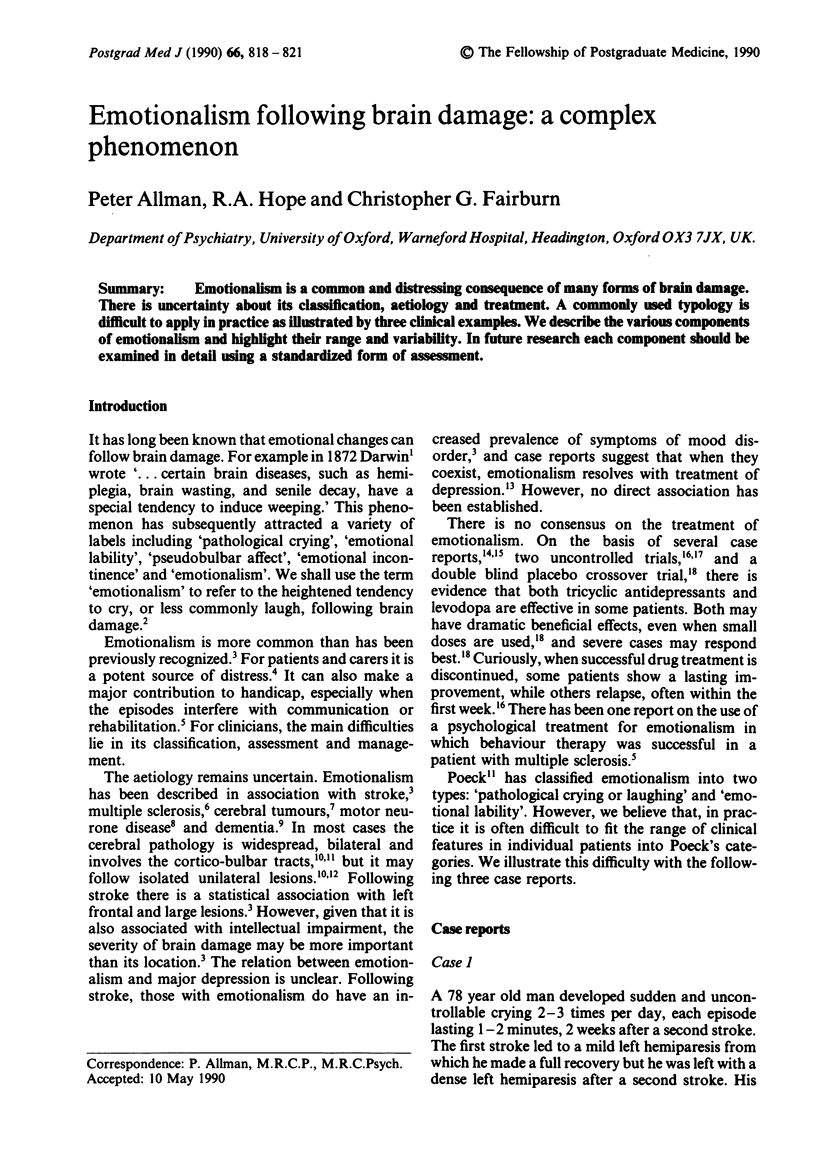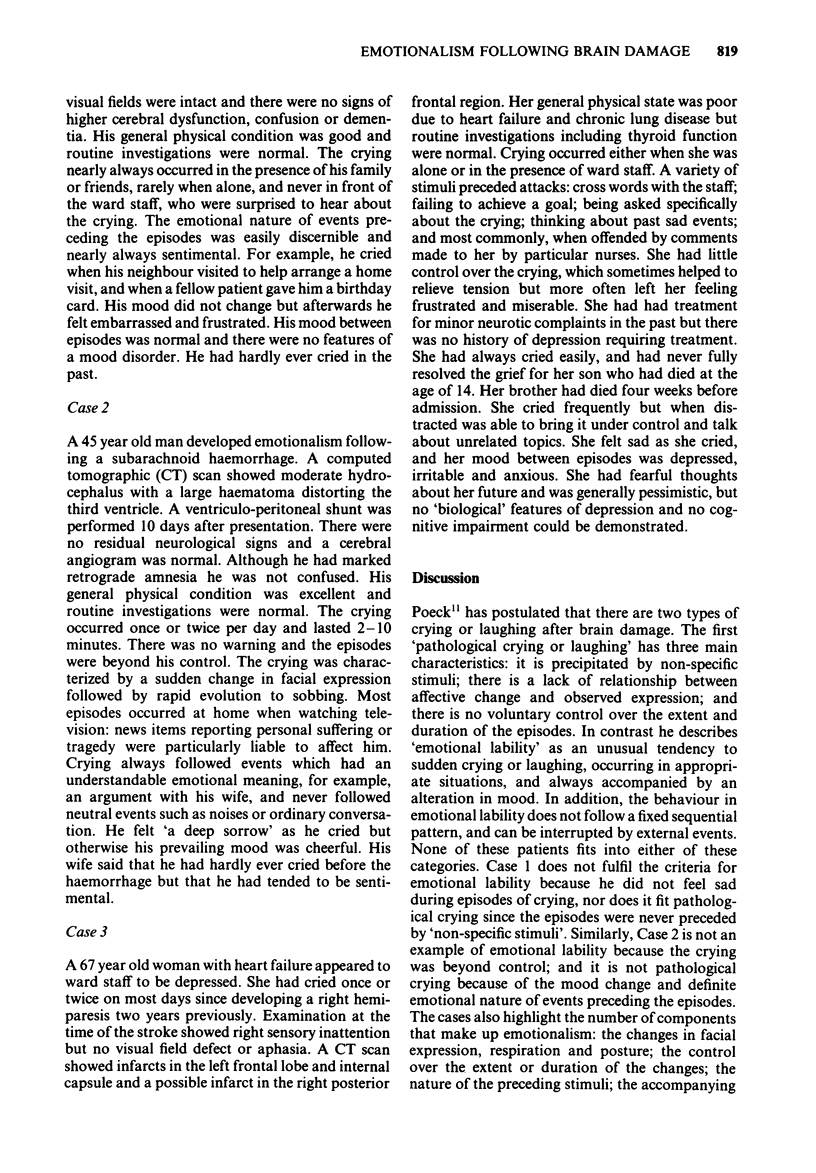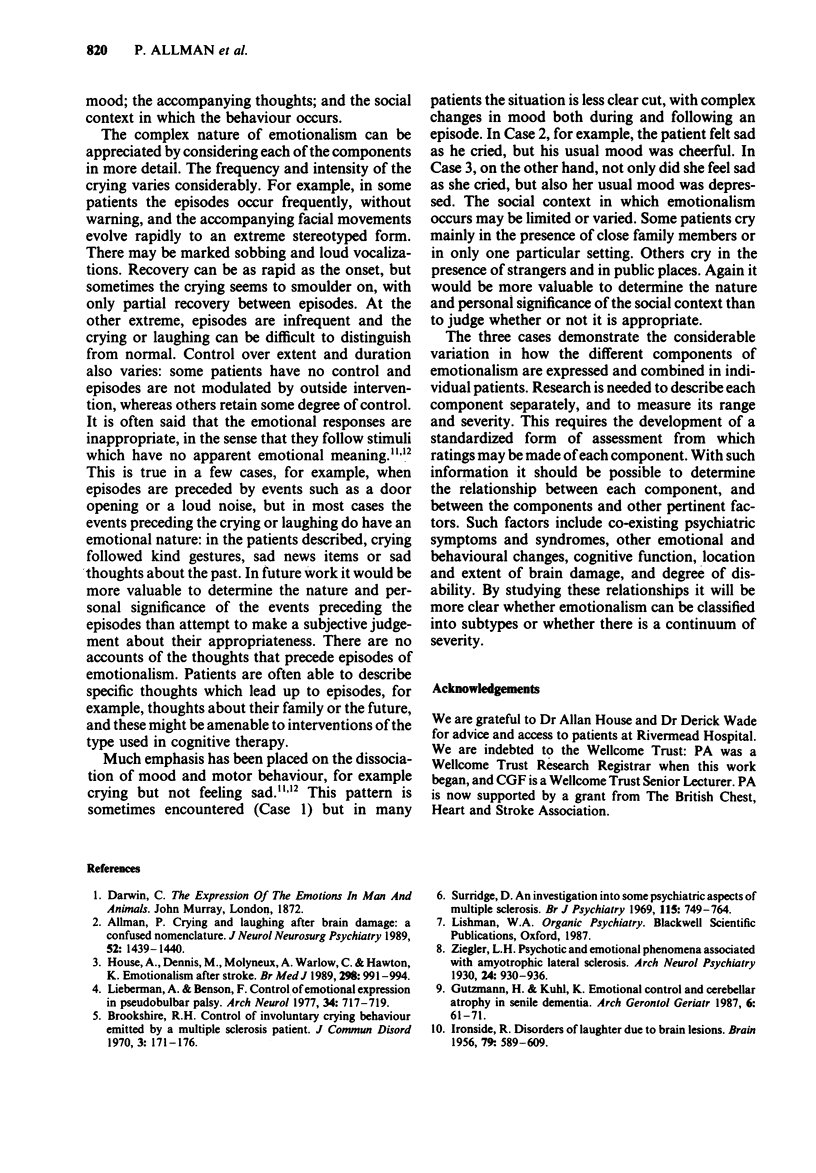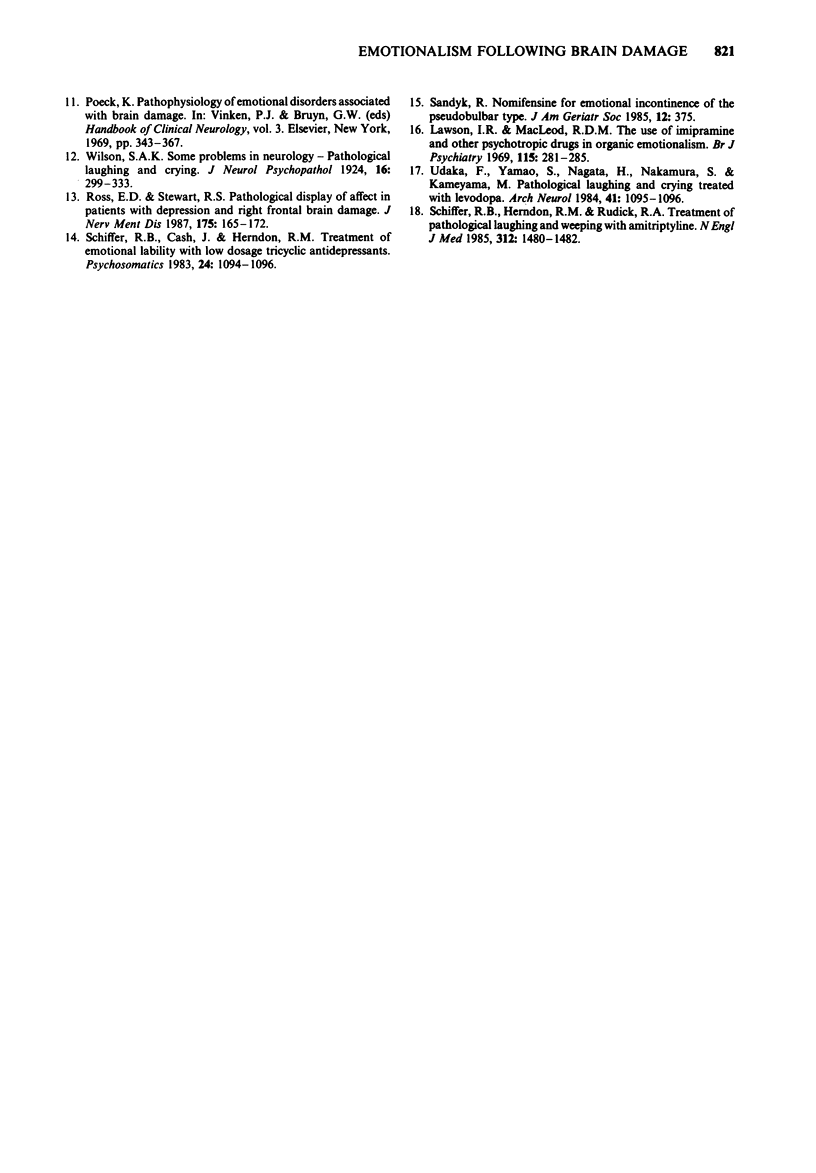Abstract
Emotionalism is a common and distressing consequence of many forms of brain damage. There is uncertainty about its classification, aetiology and treatment. A commonly used typology is difficult to apply in practice as illustrated by three clinical examples. We describe the various components of emotionalism and highlight their range and variability. In future research each component should be examined in detail using a standardized form of assessment.
Full text
PDF



Selected References
These references are in PubMed. This may not be the complete list of references from this article.
- Allman P. Crying and laughing after brain damage: a confused nomenclature. J Neurol Neurosurg Psychiatry. 1989 Dec;52(12):1439–1440. doi: 10.1136/jnnp.52.12.1439. [DOI] [PMC free article] [PubMed] [Google Scholar]
- Gutzmann H., Kühl K. P. Emotion control and cerebellar atrophy in senile dementia. Arch Gerontol Geriatr. 1987 Apr;6(1):61–71. doi: 10.1016/0167-4943(87)90039-2. [DOI] [PubMed] [Google Scholar]
- House A., Dennis M., Molyneux A., Warlow C., Hawton K. Emotionalism after stroke. BMJ. 1989 Apr 15;298(6679):991–994. doi: 10.1136/bmj.298.6679.991. [DOI] [PMC free article] [PubMed] [Google Scholar]
- IRONSIDE R. Disorders of laughter due to brain lesions. Brain. 1956 Dec;79(4):589–609. doi: 10.1093/brain/79.4.589. [DOI] [PubMed] [Google Scholar]
- Lawson I. R., MacLeod R. D. The use of imipramine ("Tofranil") and other psychotropic drugs in organic emotionalism. Br J Psychiatry. 1969 Mar;115(520):281–285. doi: 10.1192/bjp.115.520.281. [DOI] [PubMed] [Google Scholar]
- Lieberman A., Benson D. F. Control of emotional expression in pseudobulbar palsy. A personal experience. Arch Neurol. 1977 Nov;34(11):717–719. doi: 10.1001/archneur.1977.00500230087017. [DOI] [PubMed] [Google Scholar]
- Ross E. D., Stewart R. S. Pathological display of affect in patients with depression and right frontal brain damage. An alternative mechanism. J Nerv Ment Dis. 1987 Mar;175(3):165–172. doi: 10.1097/00005053-198703000-00007. [DOI] [PubMed] [Google Scholar]
- Sandyk R. Nomifensine for "emotional incontinence" of the pseudobulbar type. J Am Geriatr Soc. 1985 May;33(5):375–375. doi: 10.1111/j.1532-5415.1985.tb07141.x. [DOI] [PubMed] [Google Scholar]
- Schiffer R. B., Cash J., Herndon R. M. Treatment of emotional lability with low-dosage tricyclic antidepressants. Psychosomatics. 1983 Dec;24(12):1094–1096. doi: 10.1016/S0033-3182(83)73113-0. [DOI] [PubMed] [Google Scholar]
- Schiffer R. B., Herndon R. M., Rudick R. A. Treatment of pathologic laughing and weeping with amitriptyline. N Engl J Med. 1985 Jun 6;312(23):1480–1482. doi: 10.1056/NEJM198506063122303. [DOI] [PubMed] [Google Scholar]
- Surridge D. An investigation into some psychiatric aspects of multiple sclerosis. Br J Psychiatry. 1969 Jul;115(524):749–764. doi: 10.1192/bjp.115.524.749. [DOI] [PubMed] [Google Scholar]
- Udaka F., Yamao S., Nagata H., Nakamura S., Kameyama M. Pathologic laughing and crying treated with levodopa. Arch Neurol. 1984 Oct;41(10):1095–1096. doi: 10.1001/archneur.1984.04050210093023. [DOI] [PubMed] [Google Scholar]
- Wilson S. A. Original Papers: SOME PROBLEMS IN NEUROLOGY. J Neurol Psychopathol. 1924 Feb;4(16):299–333. doi: 10.1136/jnnp.s1-4.16.299. [DOI] [PMC free article] [PubMed] [Google Scholar]


